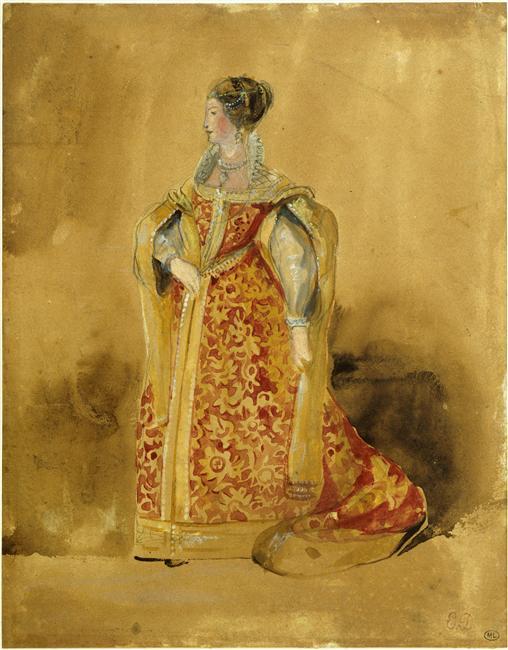<body><p>Array</p></body>
[[{"fid":"974","view_mode":"default","fields":{"format":"default","field_file_image_alt_text[und][0][value]":"","field_file_image_title_text[und][0][value]":"","field_copyright[und][0][value]":""},"type":"media","attributes":{"class":"media-element file-default","height":650,"style":"font-size: 10px; height: 512px; width: 400px; float: left; margin-right: 20px;","width":508}}]]
The lives of the Tudors have all the ingredients of an excellent plot. From the beginning of the 17th century, many writers – including Shakespeare – became aware of the legend’s dramatic qualities. Later, in the 19th century, the Tudors would become the subject of epic melodramas that mingled desire and duty, justice and betrayal, all against a historical backdrop.
The wives of Henry VIII and the suitors of Elizabeth I would often be portrayed as victims. Also represented were Lady Jane Grey, queen for nine days, and Mary Stuart, Queen of Scots, both great-granddaughters of Henry VII, and both ultimately beheaded. The theme inspired some of the finest names in French literature and Italian opera: Hugo and Dumas, Rossini and Donizetti… In 19th century in Paris, ties were established between historical paintings and the stage, with artists who were attentive to theatrical events such as Paul Delaroche and Eugène Devéria. Sometimes, the paintings themselves set the tone of the resulting theatrical productions. On a number of occasions, the works of Delaroche would be portrayed on the stage as veritable tableaux vivants.
(légende : Eugène Delacroix, Femme debout vêtue d'un costume chamarré © RMN-Grand Palais (musée du Louvre) / Jean Schormans)


